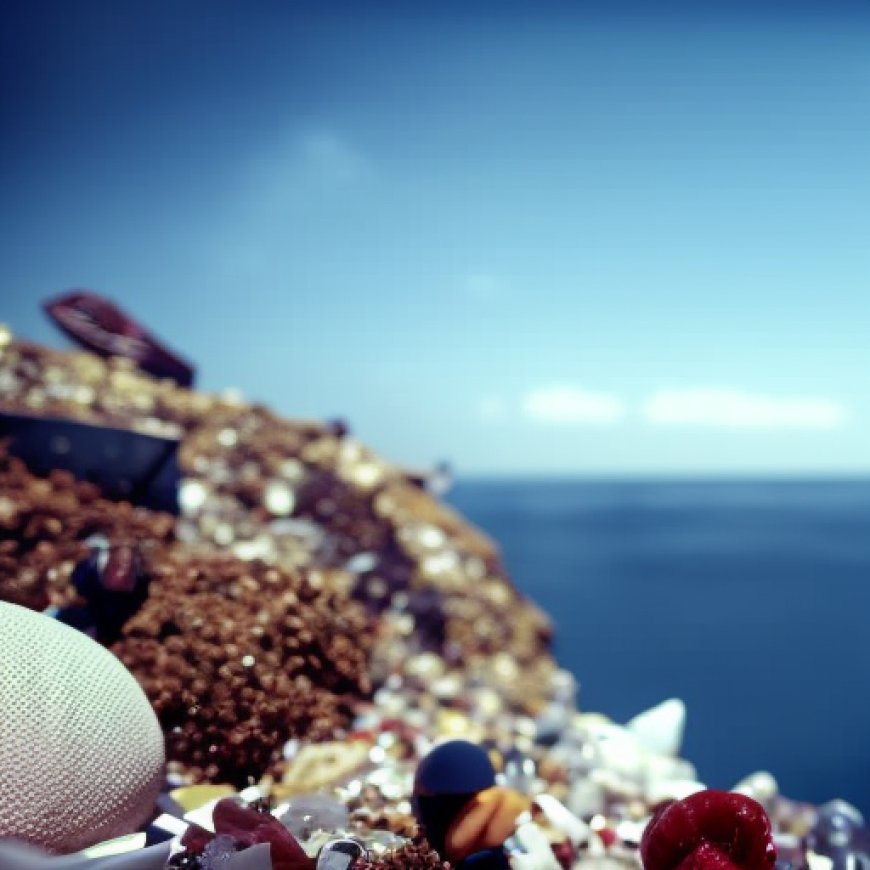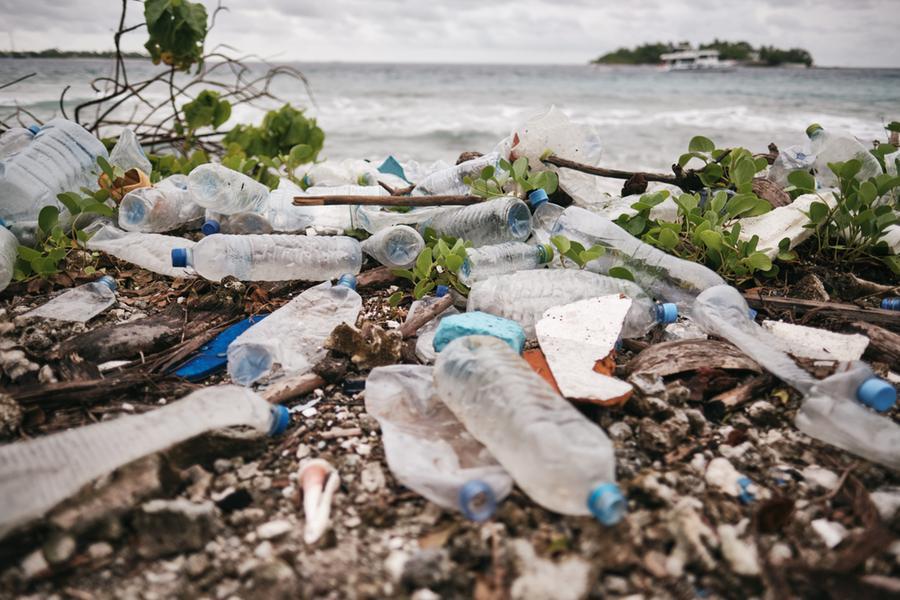Over 84% of waste in Tunisian coastal marine environment mainly made up of plastics
Over 84% of waste in Tunisian coastal marine environment mainly made up of plastics ZAWYA


Coastal Marine Environment in Tunisia Faces High Levels of Polymer-Based Waste

According to data published by the WWF North Africa-Tunisia office, over 84% of waste in the coastal marine environment is polymer-based, with plastics being the main contributor. The remaining waste consists of minerals, building materials, and glass.
Marine Litter Hotspots
The study revealed that the highest quantities of marine litter were found in the following areas:
- Kheireddine Canal: 2,086 waste items along 100 meters of coastline
- Gulf of Gammarth: 1,179 waste items along 100 meters of coastline
- Chott Limaoua in the Gulf of Gabes: 893 waste items along 100 meters of coastline
On the other hand, the lowest quantities of marine litter were recorded at Yeti 2 beach in the Gulf of Gabes (755 waste items along 100 meters of coastline) and Cap Serrat beach in the north (193 waste items along 100 meters of coastline).
The “Adopt a Beach” Campaign
The data collected is a result of the “Adopt a Beach” campaign, an initiative by WWF aimed at minimizing plastic and coastal pollution. The campaign encourages volunteers to collect qualitative and quantitative data on beach pollution.
The first edition of the campaign took place in 2023 with the participation of 40 partners, mostly representing civil society. In each edition, the mission is to monitor beach pollution and conduct an environmental study.
The results of these studies are available on the WWF website. Additionally, the WWF Tunisia Office is actively involved in environmental education in public and private schools. The aim is to introduce environmental education as a school subject.
According to Marine Programme Coordinator Mehdi Ben Aissa, 84% of schools have expressed willingness to include environmental education in their curriculum. A pilot experience will be launched in June to test its effectiveness.
Plastic Waste in Tunisia
Data published by the Environment Ministry reveals that Tunisia generates over 2.5 million tonnes of waste per year, with plastic waste accounting for 10% of the total waste. Unfortunately, around 500,000 tonnes of plastic waste end up in the sea annually, causing significant environmental damage to marine ecosystems and human health.
Source: Tap (2022). Provided by SyndiGate Media Inc. (Syndigate.info).
SDGs, Targets, and Indicators
| SDGs | Targets | Indicators |
|---|---|---|
| SDG 14: Life Below Water | Target 14.1: By 2025, prevent and significantly reduce marine pollution of all kinds, particularly from land-based activities, including marine debris and nutrient pollution. | – Percentage of waste in the coastal marine environment that is polymer-based – Quantity of marine litter found in specific areas (Kheireddine Canal, Gulf of Gammarth, Chott Limaoua, Yeti 2 beach, Cap Serrat beach) |
| SDG 12: Responsible Consumption and Production | Target 12.5: By 2030, substantially reduce waste generation through prevention, reduction, recycling, and reuse. | – Total waste generated in Tunisia per year – Percentage of plastic waste in the total waste generated |
| SDG 4: Quality Education | Target 4.7: By 2030, ensure that all learners acquire the knowledge and skills needed to promote sustainable development. | – Number of schools willing to include environmental education as a subject in the curriculum – Launch of a pilot experience for environmental education in schools |
Analysis
1. Which SDGs are addressed or connected to the issues highlighted in the article?
The issues highlighted in the article are connected to SDG 14: Life Below Water, SDG 12: Responsible Consumption and Production, and SDG 4: Quality Education.
2. What specific targets under those SDGs can be identified based on the article’s content?
Based on the article’s content, the specific targets that can be identified are:
– Target 14.1: By 2025, prevent and significantly reduce marine pollution of all kinds, particularly from land-based activities, including marine debris and nutrient pollution.
– Target 12.5: By 2030, substantially reduce waste generation through prevention, reduction, recycling, and reuse.
– Target 4.7: By 2030, ensure that all learners acquire the knowledge and skills needed to promote sustainable development.
3. Are there any indicators mentioned or implied in the article that can be used to measure progress towards the identified targets?
Yes, there are indicators mentioned or implied in the article that can be used to measure progress towards the identified targets. These indicators include:
– Percentage of waste in the coastal marine environment that is polymer-based: This indicator can measure progress towards Target 14.1 by assessing the reduction of polymer-based waste in the marine environment.
– Quantity of marine litter found in specific areas (Kheireddine Canal, Gulf of Gammarth, Chott Limaoua, Yeti 2 beach, Cap Serrat beach): This indicator can also measure progress towards Target 14.1 by monitoring the amount of marine litter in different areas.
– Total waste generated in Tunisia per year: This indicator can measure progress towards Target 12.5 by evaluating the reduction of waste generation in Tunisia.
– Percentage of plastic waste in the total waste generated: This indicator can also measure progress towards Target 12.5 by tracking the proportion of plastic waste in the overall waste generated.
– Number of schools willing to include environmental education as a subject in the curriculum: This indicator can measure progress towards Target 4.7 by assessing the level of interest and commitment from schools to incorporate environmental education.
– Launch of a pilot experience for environmental education in schools: This indicator can also measure progress towards Target 4.7 by evaluating the implementation of environmental education programs in schools.
SDGs, Targets, and Indicators
| SDGs | Targets | Indicators |
|---|---|---|
| SDG 14: Life Below Water | Target 14.1: By 2025, prevent and significantly reduce marine pollution of all kinds, particularly from land-based activities, including marine debris and nutrient pollution. | – Percentage of waste in the coastal marine environment that is polymer-based – Quantity of marine litter found in specific areas (Kheireddine Canal, Gulf of Gammarth, Chott Limaoua, Yeti 2 beach, Cap Serrat beach) |
| SDG 12: Responsible Consumption and Production | Target 12.5: By 2030, substantially reduce waste generation through prevention, reduction, recycling, and reuse. | – Total waste generated in Tunisia per year – Percentage of plastic waste in the total waste generated |
| SDG 4: Quality Education | Target 4.7: By 2030, ensure that all learners acquire the knowledge and skills needed to promote sustainable development. | – Number of schools willing to include environmental education as a subject in the curriculum – Launch of a pilot experience for environmental education in schools |
Copyright: Dive into this article, curated with care by SDG Investors Inc. Our advanced AI technology searches through vast amounts of data to spotlight how we are all moving forward with the Sustainable Development Goals. While we own the rights to this content, we invite you to share it to help spread knowledge and spark action on the SDGs.
Fuente: zawya.com

Join us, as fellow seekers of change, on a transformative journey at https://sdgtalks.ai/welcome, where you can become a member and actively contribute to shaping a brighter future.







